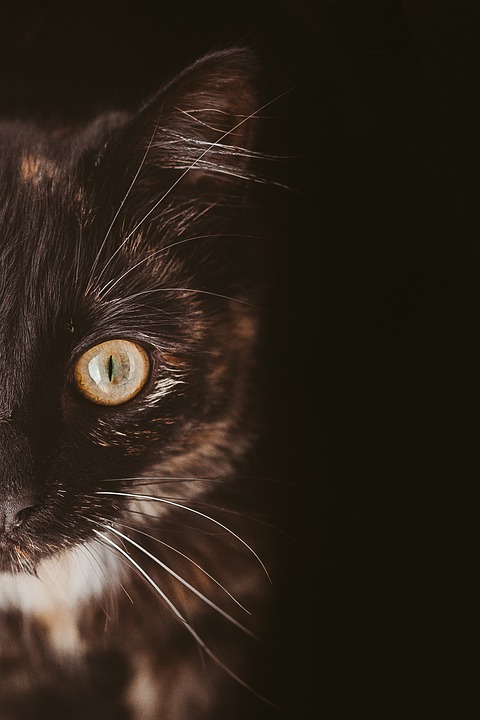Cats are known for their communication skills, and vocalization is one of the primary ways they express themselves. However, excessive vocalization can become a nuisance, especially when it is driven by attention-seeking behavior. In this article, we will delve into the reasons behind excessive vocalization and provide practical tips on how to cope with this behavior. Additionally, we will address some frequently asked questions to help cat owners better understand their feline companions.
Understanding Excessive Vocalization in Cats:
Excessive vocalization refers to a cat’s habit of continuously meowing or making loud noises to seek attention. While some vocalization is normal, especially during specific situations like mealtime or when a cat is in heat, excessive vocalization can become problematic and frustrating for owners.
Cats vocalize excessively when seeking attention because it has proven to be an effective way to get their owner’s attention in the past. They quickly learn that meowing loudly will often result in their owner responding and providing them with the desired attention.
Common types of vocalizations associated with attention-seeking behavior include loud and persistent meowing, yowling, and even howling. Cats may also use different pitches and tones to communicate different needs or desires.
Identifying the Underlying Causes:
While attention-seeking behavior is the most common cause of excessive vocalization, it is essential to rule out any underlying medical issues. Excessive vocalization can sometimes be a symptom of pain, discomfort, or an underlying health condition. Signs to look for to differentiate attention-seeking vocalization from other concerns include changes in appetite, litter box habits, weight loss, or any other unusual behavior.
If you notice any of these signs, it is crucial to consult a veterinarian to rule out any medical conditions that may be causing the excessive vocalization.
Addressing Excessive Vocalization – Tips and Techniques:
Managing excessive vocalization requires a multi-faceted approach that addresses both the underlying causes and the attention-seeking behavior itself. Here are some tips and techniques to help cope with excessive vocalization:
1. Provide ample mental and physical stimulation to prevent boredom. Interactive toys and puzzle feeders can keep your cat entertained and mentally engaged. Regular play sessions and exercise can also help tire them out and reduce their need for attention.
2. Establish a consistent routine and schedule for feeding and playtime. Cats thrive on routine, and having a predictable schedule can help reduce their need for attention-seeking behaviors.
3. Use positive reinforcement techniques to reward desired behaviors. Ignore excessive vocalization and only reward quiet behavior. Treats, praise, and petting can be effective rewards for good behavior.
4. Create a safe and comforting environment for your cat. Provide hiding spots and elevated perches where your cat can retreat to when they need some alone time. Having a designated space for your cat can help them feel secure and reduce their need for attention.
5. Utilize environmental enrichment techniques. Providing scratching posts and vertical spaces allows your cat to engage in natural behaviors. Setting up window perches or bird feeders can provide visual stimulation and entertainment. Consider using calming pheromone diffusers to create a soothing environment.
6. Consider interactive toys and puzzles to keep your cat mentally engaged. These toys can provide mental stimulation and distract your cat from seeking attention from you.
Frequently Asked Questions (FAQs):
1. Can excessive vocalization be a sign of a medical problem? Yes, excessive vocalization can sometimes indicate an underlying medical issue, and it is essential to consult a veterinarian to rule out any health concerns.
2. How can I tell if my cat’s vocalization is attention-seeking or due to another issue? Pay attention to any changes in behavior, appetite, or litter box habits. If there are no other concerning signs, excessive vocalization is likely due to attention-seeking behavior.
3. Will neutering or spaying my cat help reduce excessive vocalization? Neutering or spaying can help reduce excessive vocalization, especially if it is related to mating behavior or hormones.
4. How long does it take for these behavior modification techniques to work? The time it takes for behavior modification techniques to work can vary depending on the individual cat. Consistency and patience are key, and it may take several weeks or even months to see significant improvements.
5. Should I punish my cat for excessive vocalization? Punishment is not recommended as it can cause fear and anxiety in cats, potentially exacerbating the problem. Instead, focus on rewarding desired behaviors and providing appropriate outlets for attention-seeking.
6. Are there any medications that can help with attention-seeking vocalization? In some cases, medication may be prescribed by a veterinarian to help manage excessive vocalization, especially if it is related to anxiety or other underlying conditions.
7. Is excessive vocalization more common in certain cat breeds? While excessive vocalization can occur in any cat breed, some breeds, such as Siamese and Burmese cats, are known to be more vocal than others.
Conclusion:
Excessive vocalization driven by attention-seeking behavior can be frustrating but can also be managed with the right approach. By understanding the underlying causes and implementing behavior modification techniques, cat owners can create a harmonious environment for their feline companions. Remember, patience and consistency are key when dealing with excessive vocalization, and consulting a veterinarian is always advisable to ensure your cat’s well-being.








